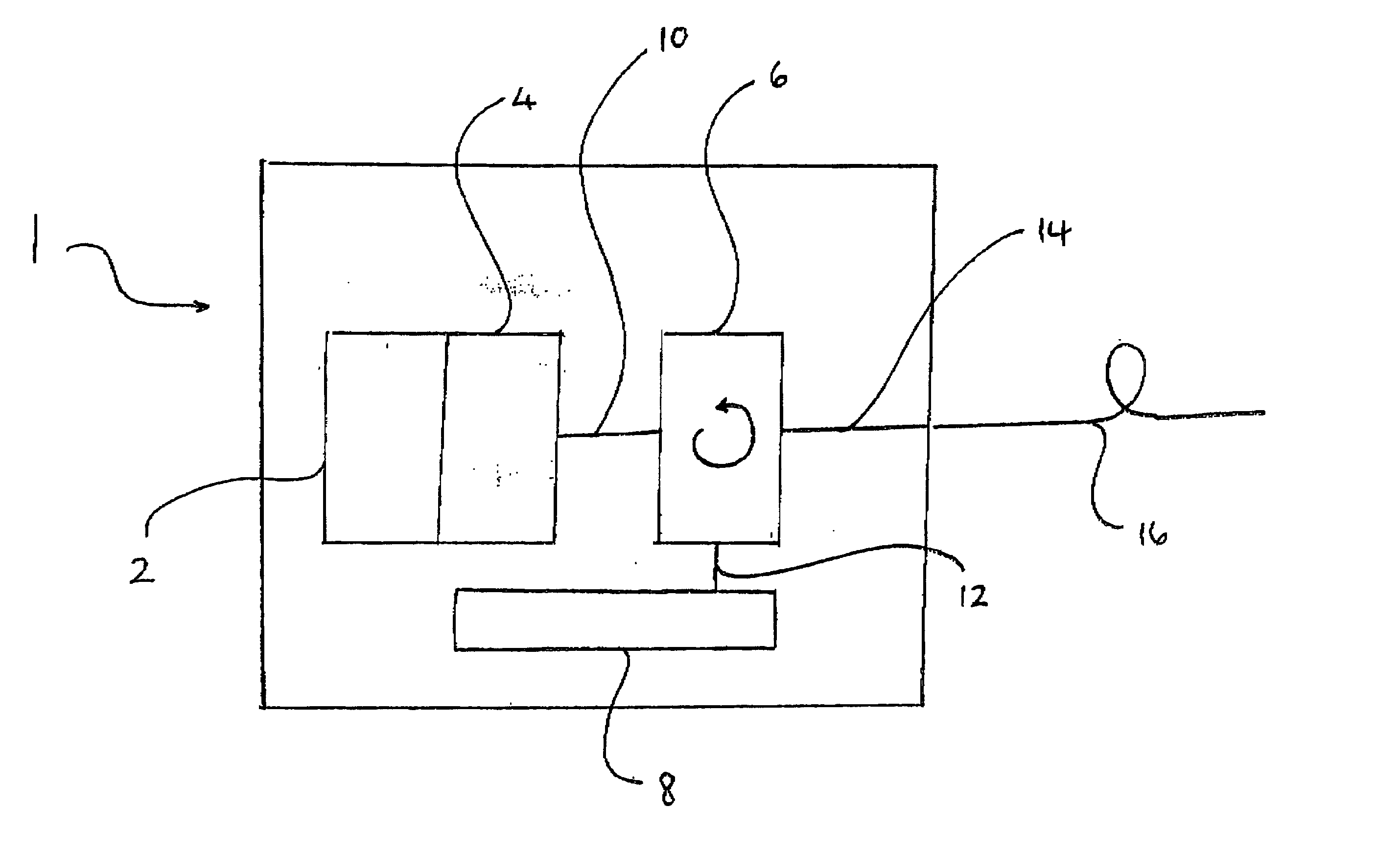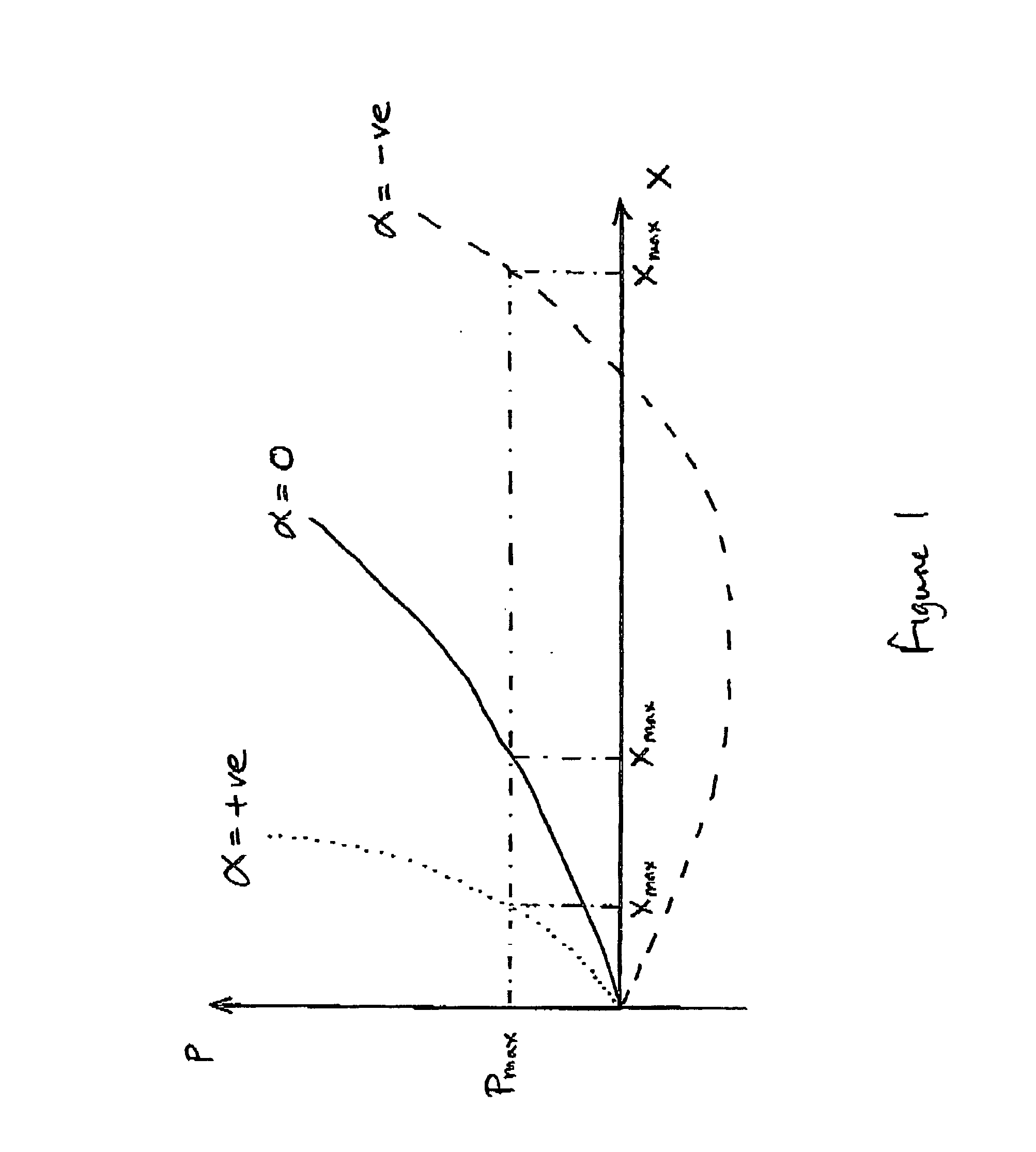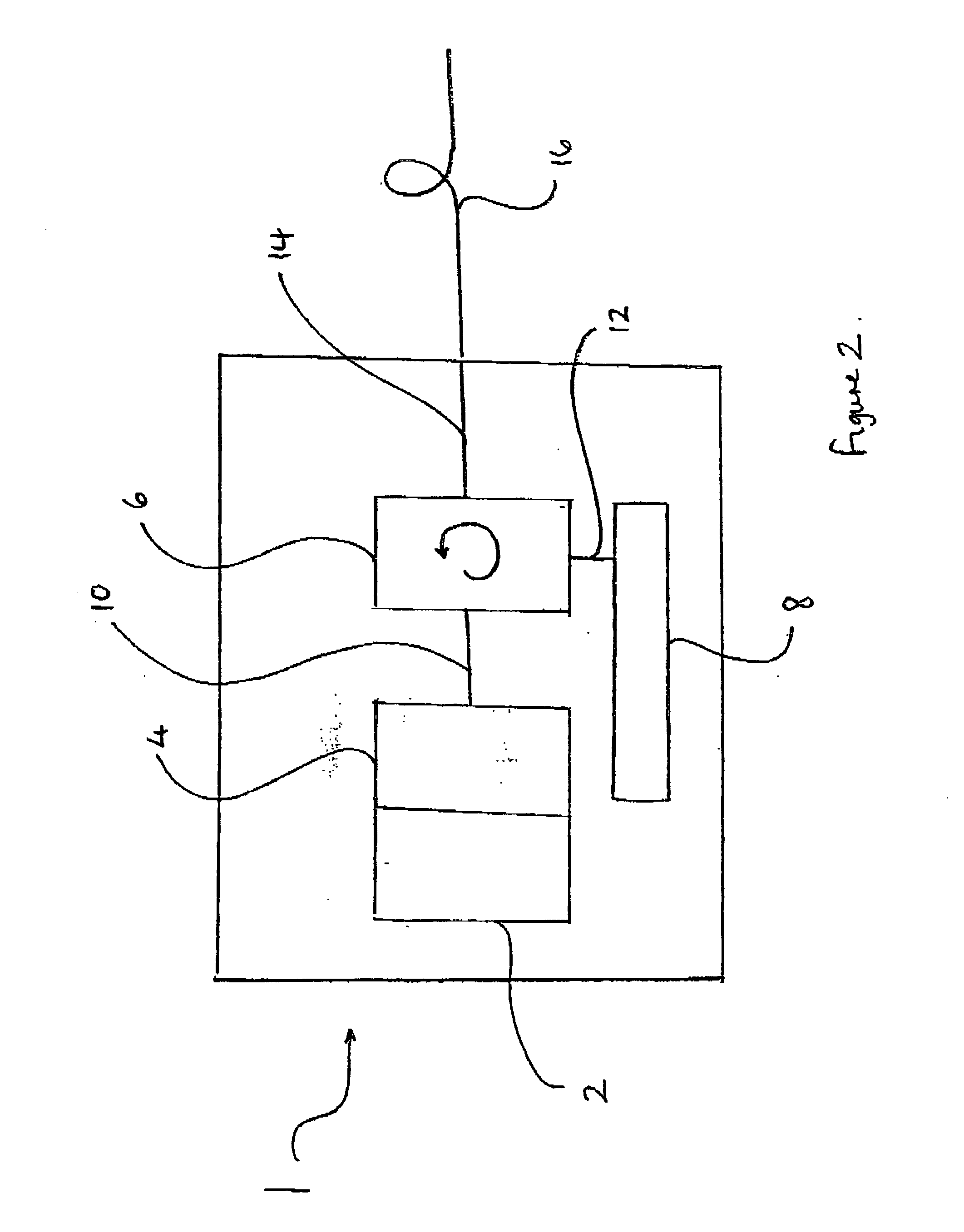Optical transmission systems
- Summary
- Abstract
- Description
- Claims
- Application Information
AI Technical Summary
Benefits of technology
Problems solved by technology
Method used
Image
Examples
Embodiment Construction
[0066] With reference to FIG. 2, a transmitter module 1 has an optical source 2, a modulator 4, coupling means 6 and a dispersion element 8. An output 10 from the modulator 4 is input to the coupling means 6. An input / output 12 from the coupling means 6 is connected to the dispersion element 8. An output 14 from the coupling means 6 is connected to a NDSE 16.
[0067] In the specific embodiment illustrated, the optical source 2 and the modulator 4 are a 10 Gbits / s DFB-electro absorption integrated laser modulator (ILM). The laser wavelength is positioned in relation to the edge of the ILM modulator absorption band so as to introduce pure positive chirp. A chirp factor a is also selected, in this specific case of +0.7. The coupling means 6 is a three port circulator. The dispersion element is a linear chirped fibre Bragg grating (FBG) which has a bandwidth to fully cover the wavelength channels of interest but with sufficient guard bandwidth to cover any wavelength detaining effects tha...
PUM
 Login to View More
Login to View More Abstract
Description
Claims
Application Information
 Login to View More
Login to View More - R&D
- Intellectual Property
- Life Sciences
- Materials
- Tech Scout
- Unparalleled Data Quality
- Higher Quality Content
- 60% Fewer Hallucinations
Browse by: Latest US Patents, China's latest patents, Technical Efficacy Thesaurus, Application Domain, Technology Topic, Popular Technical Reports.
© 2025 PatSnap. All rights reserved.Legal|Privacy policy|Modern Slavery Act Transparency Statement|Sitemap|About US| Contact US: help@patsnap.com



